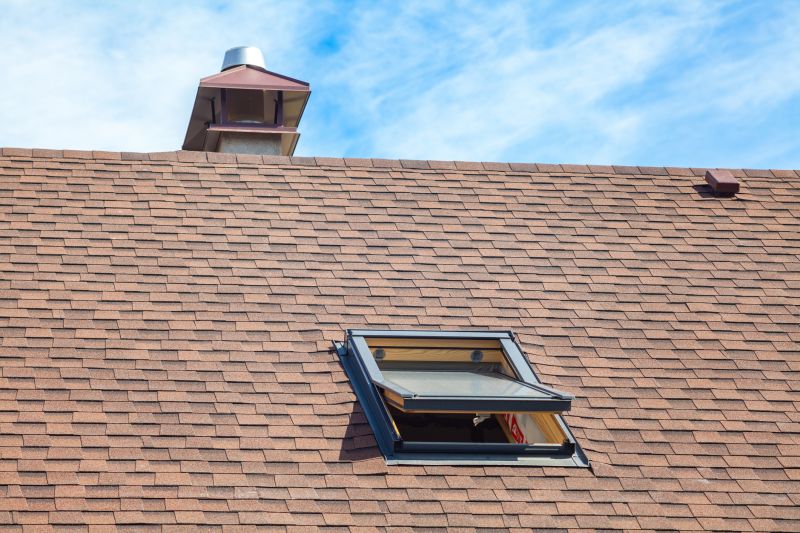Expert Picks for Attic Vent Installation Equipment
Find trusted tools and materials recommended by professionals to achieve efficient attic ventilation systems.
 Attic vent installation is a crucial aspect of maintaining proper attic ventilation, which can influence the overall health and efficiency of a home. Proper ventilation helps regulate temperature, prevent moisture buildup, and reduce the risk of mold growth. Selecting the right products for attic vent installation involves understanding various types of vents, materials, and features to ensure compatibility with your attic space and roofing system. From basic soffit vents to advanced powered attic ventilators, there are numerous options designed to meet different needs and preferences.
Attic vent installation is a crucial aspect of maintaining proper attic ventilation, which can influence the overall health and efficiency of a home. Proper ventilation helps regulate temperature, prevent moisture buildup, and reduce the risk of mold growth. Selecting the right products for attic vent installation involves understanding various types of vents, materials, and features to ensure compatibility with your attic space and roofing system. From basic soffit vents to advanced powered attic ventilators, there are numerous options designed to meet different needs and preferences.
Top Overall Option
Universal Attic Ventilation Fan
A versatile attic ventilation fan designed to fit a wide range of attic sizes and configurations, providing effective airflow and helping to regulate temperature and moisture levels. Its adjustable settings and durable construction make it suitable for various home environments, ensuring reliable operation over time.
Types of Products For Attic Vent Installations
Ridge Vents
Long, continuous vents installed along the roof ridge to facilitate exhaust airflow across the attic space.
Soffit Vents
Vents placed under the eaves or soffits to allow fresh air intake from outside.
Gable Vents
Vents installed on the gable ends of the attic to promote cross-ventilation.
Roof Vents
Various types of vents installed directly into the roof surface, including box vents and turbine vents.
Powered Attic Vents
Electric-powered fans that actively circulate air, often with thermostatic controls for automatic operation.
Static Vents
Non-mechanical vents that allow passive airflow through openings in the roof or soffit.
Attic Fan Kits
Complete kits that include fans, mounting hardware, and wiring for easy installation.
Louvered Vents
Vents with adjustable louvers to control airflow and prevent debris entry.
Insect Screen Vents
Vents equipped with screens to prevent pests and debris from entering the attic space.
Solar Attic Vents
Vents powered by solar panels, offering energy-efficient passive ventilation options.
Popular Choices
Widely used for their seamless integration along the roof ridge, promoting continuous airflow.
Commonly installed under eaves to facilitate intake airflow from outside.
Popular for attic cross-ventilation, especially on gable-end homes.
Electric fans that help actively circulate air, often with automatic controls.
Energy-efficient options powered by solar energy, suitable for various climates.
Rotating vents that use wind energy to promote ventilation without electrical power.
Simple, box-shaped roof vents that allow passive airflow and are easy to install.
Adjustable vents that help control airflow and prevent unwanted debris entry.
Vents with screens to keep pests out while allowing airflow.
Complete installation kits for powered ventilation solutions, suitable for DIY projects.
When considering attic vents, it is important to evaluate the size and shape of your attic, the existing ventilation system, and local climate conditions. Proper airflow is essential for preventing heat accumulation during warmer months and moisture retention during colder periods. Installing the right combination of intake and exhaust vents can promote effective cross-ventilation, helping maintain a balanced attic environment.
Durability and material quality also play significant roles in product longevity and performance. Materials such as aluminum, galvanized steel, and durable plastics are common choices, each offering different benefits in terms of corrosion resistance and ease of installation. Additionally, features like adjustable louvers, insect screens, and weatherproofing can enhance the functionality of attic vents, making them more effective and easier to maintain over time.
Ultimately, selecting the appropriate attic vent products requires careful consideration of your specific attic configuration, budget, and long-term maintenance needs. Consulting with a professional or conducting thorough research can help ensure that your installation promotes optimal airflow, protects your home, and extends the lifespan of your roofing system.
Key Buying Considerations
- Attic size and volume to determine the appropriate vent capacity.
- Type of ventilation required: passive or powered options.
- Material durability and resistance to corrosion or weathering.
- Ease of installation and compatibility with existing roofing systems.
- Presence of insect screens or weatherproof features.
- Energy efficiency and electrical requirements for powered vents.
- Compatibility with local climate conditions, such as wind and temperature variations.
- Maintenance requirements, including cleaning and inspection needs.
- Aesthetic integration with the roof design.
- Availability of adjustable features for controlling airflow.
- Noise levels of powered ventilation options.
- Cost considerations and long-term durability.
- Potential need for professional installation versus DIY capability.
- Warranty and support from the manufacturer.
